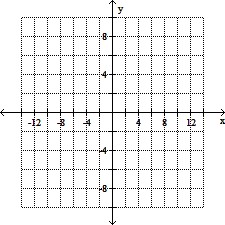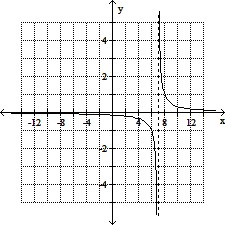Sketch the graph of the function. Indicate where it is increasing and where it is decreasing. Indicate where any relative extrema occur, where asymptotes occur, where the graph is concave up and where is it concave down, where any points of inflection occur, and where any intercepts occur. f(x) = 

What will be an ideal response?

Decreasing on (-?, 7) and (7, ?)
No relative extrema
Asymptotes: x = 7 and y = 0
Concave down on (-?, 7); concave up on (7, ?)
No points of inflection
y-intercept:  , no x-intercepts
, no x-intercepts
Mathematics
You might also like to view...
Use the formula for the nth term of a geometric sequence to find the indicated term of the sequence with the given first term, a, and common ratio, r.Find a10 when a = 6, r = -2.
A. -12 B. 6144 C. -3072 D. -3068
Mathematics
Perform the indicated arithmetic.1 + 6
+ 6
A. 7
B. 8
C. 7
D. 7
Mathematics
Given a normal distribution with mean 120 and standard deviation 5, find the number of standard deviations the measurement is from the mean. Express the answer as a positive number.134.9
A. 2.98 B. 2.18 C. 3.25 D. 3.02
Mathematics
Solve. +
+  =
= 
A. y = 
B. y = 
C. y = 57
D. y = -1
Mathematics